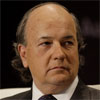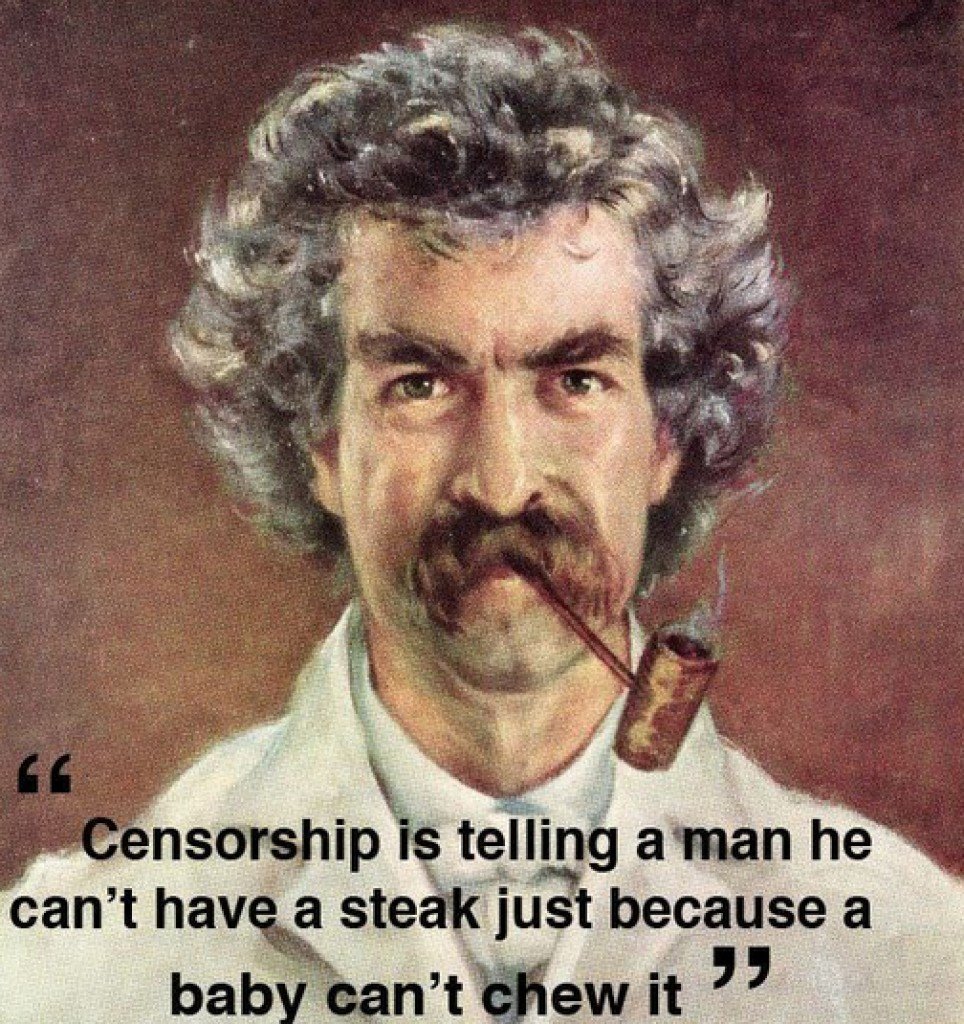This topic contains 7 replies, has 5 voices, and was last updated by ![]() Badger 1 year, 7 months ago.
Badger 1 year, 7 months ago.
- AuthorPosts
The US Federal Reserve, Quantitative Tightening and Emerging Markets [1][2][3]
James G Rickards
The Daily Reckoning
June 2018
James G. Rickards is the editor of Strategic Intelligence. He is an American lawyer, economist, and investment banker with 35 years of experience working in capital markets on Wall Street. He was the principal negotiator of the rescue of Long-Term Capital Management L.P. (LTCM) by the U.S Federal Reserve in 1998.His work is regularly featured in the Financial Times, Evening Standard, New York Times, The Telegraph, and Washington Post. He has contributed as an advisor on capital markets to the U.S. intelligence community, and at the Office of the Secretary of Defense in the Pentagon. His clients include institutional investors and government directorates.
Rickards is the author of four New York Times best sellers, The New Case for Gold (April 2016), The Death of Money (2014), Currency Wars (2011), The Road to Ruin (2016)

Beginning in December 2015, Janet Yellen put the Fed on a path to raise interest rates 0.25% every March, June, September and December, a tempo of 1% per year through 2019, until the Fed “normalizes” interest rates around 3%.
The only exception to this 1%-per-year tempo is when the Fed takes a “pause” in hiking rates because one part of its dual mandate of job creation and price stability is not being met. Yellen raised rates in a weak economy, and now Jay Powell has done the same.
I’ve warned repeatedly that the Fed is tightening into weakness. Why is it doing so?
This effort on the part of central banks to reduce yields on safe assets and force investors into risky assets, known as the “portfolio channel” method, was supposed to produce a “wealth effect.”
In theory, investors would drive up stock prices, which would encourage consumer confidence and consumer spending and ultimately result in a return to trend economic growth of 3% or higher.
The wealth effect never materialized. Consumer confidence was boosted by higher stock prices but consumers never increased their spending to any significant extent. Instead, they paid down debt as a way to repair their personal balance sheets after the historic losses of 2007–08.
Instead of producing more consumption, the portfolio channel effect only produced asset bubbles in U.S. and emerging-markets stocks. Investors chased the stock market higher as a way to meet their investment return targets.
The same was true in emerging markets.
I’ve said repeatedly but can’t say enough, is that the Fed is preparing for the next crisis. The evidence is clear that it takes 3% to 4% in rate cuts to pull the U.S. out of a recession. The Fed cannot cut rates even 3% when the fed funds rate is less than 2%.
So, the Fed is in a desperate race to raise rates before a recession arrives so they can cut rates to cure the recession.
How does balance sheet normalization fit in?
Having pushed the balance sheet to $4.5 trillion in the last crisis, the Fed needs to reduce the balance sheet now so they can expand it again up to $4.5 trillion in QE4 if necessary.
Reducing the balance sheet is a precautionary step in case a recession arrives before rates reach 3%. In that case, the Fed would cut rates as far as they could until rates hit zero, and then revert to QE. (The Fed has shown no inclination to use negative rates, and the evidence from Europe, Sweden and Japan is that negative rates don’t work anyway).
The Fed does not have an unlimited capacity to monetize debt. The constraint is not legal, but psychological. There is an invisible confidence boundary on the size of the Fed’s balance sheet. The Fed cannot cross this boundary without destroying confidence in the central bank and the dollar.
Whether that boundary is $5 trillion or $6 trillion is unknowable. A central bank will find out the hard way instantaneously when they cross it. At that point, it’s too late to regain trust.
In short, the Fed is tightening monetary conditions now so they can ease conditions in the next crisis without destroying confidence in the dollar.
The Fed’s conundrum is whether they can tighten monetary conditions now without causing the recession they are preparing to cure. The evidence of the past ten years shows the answer to that conundrum is “no.”
The likely outcomes and the Fed’s real choices are the following:
In one scenario, the double dose of tightening from rate hikes and QT slows the economy, deflates asset bubbles in stocks, strengthens the dollar, and imports deflation.
As these trends become evident, disinflation could tip into mild deflation.
- QE’s 1, 2 & 3 created massive asset bubbles in the stock market as well as everything else. The S&P 500 and DJIA ran lockstep with each QE. What will be the effect of QT on the stock market?
Job creation could dry up as employers rein in costs. A stock market correction will turn into a bear market with major indices dropping 30% or more from 2018 highs.
All of these trends would be exacerbated by a global slowdown due to the trade war, concerns about U.S. debt levels, and reduced immigration. A technical recession will ensue. This would not be the end of the world. But it would be the end of one of the longest expansions and longest bull markets in stocks ever.
The other scenario is a more complex process with a far more catastrophic outcome.
In this scenario, the Fed repeats two historic blunders. The first blunder occurred in 1928 when the Fed tried to deflate an asset bubble in stocks. The second blunder was in 1937 when the Fed tightened policy too early during a period of prolonged weakness.
Until December 2017, the Fed rejected the idea that it could identify and deflate asset bubbles. This policy was based on the experience of 1928 when Fed efforts to deflate a stock bubble led to the stock market crash of October 1929 and the Great Depression.
The Fed’s preference was to let bubbles pop on their own and then clean up the mess with monetary ease if needed.
However, the popping of the mortgage bubble in 2007 was far more dangerous and the policy response far more radical that the Fed expected going into that episode.
Given the continued fragility of the financial system, the Fed began to re-think its clean-up policy and chose a more nuanced stance toward deflating bubbles.
This new view (really a reprise of the 1928 view) emerged in the minutes of the Federal Open Market Committee (FOMC), the Fed’s rate policy arm, for November 1, 2017, and was echoed in the public remarks of Fed officials in the days following this FOMC meeting.
This newfound concern about asset bubbles played out in the FOMC’s decision to raise rates at their December 13, 2017 meeting despite continued worries about disinflation.
As if to validate the Fed’s new approach, U.S. stock markets soon suffered a sharp 11% correction during February 2 – 8, 2018; a mild preview of what happens when the Fed tries to deflate asset bubbles. The Fed’s attempted finesse in financial markets could well result in a market crash as bad or worse than 1929.

- The chart shows every major US market crash as a result of interest rate hikes deflating a market bubble.
The impact of such a market crash will not be confined to the U.S. In fact, a stronger dollar resulting from tight monetary policy could precipitate a crisis in emerging markets dollar-denominated debt that transmutes into a global liquidity crisis through now well-known contagion channels.
The second Fed blunder was an effort to normalize rate policy in 1937 after eight years of ease during the worst of the Great Depression beginning in 1929. Today’s policy normalization is almost an exact replay.
Economic performance from 2007 to 2018 is best understood as a depression, not in the sense of continual declining GDP, but rather actual growth that is depressed relative to potential growth even without outright declines.
It is understandable that the Fed wishes to resume what it regards as normal monetary policy after a decade of abnormal ease. The difficulty is that the Fed has painted itself into a corner from which there is no easy exit.
When the Fed tried to normalize policy in 1937 they triggered a second severe technical recession following the 1929-1933 recession and helped to prolong the Great Depression until 1940.
Reverting to monetary ease does not allow an escape from the Fed’s dilemma. More ease merely reflates asset bubbles, increases the scale of the system, and insures a crash of unprecedented magnitude.
As the Fed attempts the “Great Unwinding” from ten years of extraordinary monetary policy, there are no good outcomes.
If the Fed persists in tightening, the best case is a slowing economy and bear market in stocks with declines of 30% or more. The worst case is a popped asset bubble and a stock market crash with declines of 50% or more.
And if the Fed goes back to ease, the asset bubbles will grow larger and a catastrophic collapse could take stocks down 80% or more as happened in the Great Depression.
Is the Fed ready for the next recession? The answer is no.
Extensive research shows that it takes between 300 and 500 basis points of interest rate cuts by the Fed to pull the U.S. economy out of a recession. (One basis point is 1/100th of 1 percentage point, so 500 basis points of rate reduction means the Fed would have to cut rates 5 percentage points.)
Right now the Fed’s target rate for fed funds, the so-called “policy rate,” is 1.75%. How do you cut rates 3–5% when you’re starting at 1.75%? You can’t.

- ‘Helicopter money’ as a result of the Zero Interest Rate Policy (ZIRP) was used to bloat assets and no-interst loans to Emerging Market economies. This process is now reversing.
Negative interest rates won’t save the day. Negative rates have been tried in Japan, the eurozone, Sweden and Switzerland, and the evidence is that they don’t work to stimulate the economy.
The idea of negative rates is that they’re an inducement to spend money; if you don’t spend it, the bank takes it from your account — the opposite of paying interest. Yet the evidence is that people save more with negative rates in order to meet their lifetime goals for retirement, health care, education, etc.
If the bank is taking money from your account, you have to save more to meet your goals. That slows down spending or what neo-Keynesians call aggregate demand. This is just one more example of how actual human behavior deviates from egghead theories.
The bottom line is that zero means zero. If a recession started tomorrow, the Fed could cut rates 1.75% before they hit zero. Then they would be out of bullets.
What about more quantitative easing, or “QE”? The Fed ended QE in late 2014 after three rounds known as QE1, QE2 and QE3 from 2008–2014. What about QE4 in a new recession?
The problem is that the Fed never cleaned up the mess from QE1, 2 and 3, so their capacity to run QE4 is in doubt.
From 2008–2014, over the course of QE1, 2 and 3, the Fed grew its balance sheet from $800 billion to $4.4 trillion. That added $3.6 trillion of newly printed money, which the Fed used to purchase long-term assets in an effort to suppress interest rates across the yield curve.
The plan was that lower long-term interest rates would force investors into riskier assets such as stocks and real estate. Ben Bernanke called this manipulation the “portfolio channel” effect.
These higher valuations for stocks and real estate would then create a “wealth effect” that would encourage more spending. The higher valuations would also provide collateral for more borrowing. This combination of more spending and lending was supposed to get the economy on a sustainable path of higher growth.
This theory was another failure by the eggheads.
The wealth effect never emerged, and the return of high leverage never returned in the U.S. either. (There is a lot more leverage overseas in emerging-market dollar-denominated debt, but that’s not what the Fed was hoping for.

- The chart shows the peaking of AE and EM bond spreads during the LCMT-Asian Currency Crisis in 1998 and the gradual drop in world rates as the Federal Reserve, ECB, BOJ Quantitative easing policies took effect. The Fed Reserve QT started in 2015 and is expected to conclude in 2021.
The EM dollar-debt bomb is another accident waiting to happen.
Emerging markets, EMs, have had an amazing run over the past two years. Moving in lock step with U.S. stock markets, the leading EM stock ETF has produced gains of over 50% since early 2016.
But just as U.S. stocks have run into higher volatility and major drawdowns in recent months, EM stocks have also encountered head winds. A major reversal of EM stock gains is emerging.
The reason U.S. stocks and EM stocks have moved together is not difficult to discern. Both asset classes are what economists call “risky” assets, in contrast to “safe” assets such as developed-market government bonds or even “risk-free” assets such as short-term U.S. Treasury bills.
(Of course, no asset is truly risk free. The U.S. credit rating suffered a downgrade in 2011 and may be downgraded again later this year).
These distinctions between risky and risk-free assets are used by portfolio managers to construct diversified portfolios that attempt to optimize total returns on a risk-adjusted basis — that is, taking into account volatility, return and liquidity.
The difficulty is that major institutional investors such as banks, insurance companies and pension funds have return targets they must meet in order to have a profitable and competitive business.
[Y : We discussed this phenomenon in another post [4]. The targetted return rates of investment firms are unrealistic and EM’s offer short-term security until Fed Funds rates increase. The main buyers of US Treasuries for 2018 are US pension and hedge funds – Y]
These return targets come from promises to insurance policy holders, retirees or stockholders. Naturally, portfolio managers are expected to take more risk in order to earn higher returns.
Developed-market government bonds have been unattractive to many portfolio managers for the past decade. These bonds offered negative returns in the cases of Japan, Germany and Sweden. Returns were not much higher in the U.S. and Canada.
Pension managers and insurance companies in particular expect their portfolios to meet return targets of 6–8% in order to pay promised benefits. With government bond rates stuck near zero, these portfolio managers went elsewhere in search of higher returns.
Many low-yielding developed-economy government bonds were purchased by the central banks of the issuing countries as part of money printing programs intended to drive down yields and force investors into risky assets such as stocks and real estate.
EMs also borrowed heavily in dollars at low rates to finance the expansion of their manufacturing and export capacities. U.S. and EM stocks enjoyed a “Goldilocks” moment the past two years. Institutional investors purchased these assets for higher yields.
The purchases drove up prices, which attracted more buying. The feedback loop continued as higher prices encouraged more buying, which led to higher prices, and so on.
The persistence of this feedback loop practically eliminated volatility, as stocks seemed only to rise and never fall. Computers interpreted this absence of volatility as a sign that these markets were less risky, since volatility is a standard measure of risk in prevailing risk-management models.
Using “risk parity” approaches, the computers then bought even more equities because they seemed to offer an optimal combination of high return and low risk, the Holy Grail of investment management.
Now lately this entire process has been thrown into reverse. The three bears have returned home and Goldilocks has jumped out the window and fled into the forest.
The primary cause of this reversal is central bank tightening. This already exists in the U.S. and is coming soon to the U.K. and the eurozone. Japan may be a few years behind the rest of the developed world but it is also working toward policy normalization.
The result is that yields on low-risk developed-economy government bonds suddenly look relatively attractive to institutional investors compared with the drawdowns and increased volatility of U.S. and EM stocks.
The Great Unwind has begun. Hot money has been heading out of stocks and moving in the direction of government bonds, where higher risk-adjusted returns await.
With this market backdrop in mind, what are the prospects for emerging markets in the months ahead?
Outflows from EM stocks have just begun and are set to accelerate dramatically in the months ahead.
This could lead to a full-blown emerging-market debt crisis with some potential to morph into a global liquidity crisis of the kind last seen in 2008, possibly worse.
Some of the main drivers of this outflow from EMs are:
- 1. China has begun cracking down on excessive leverage, zombie companies and shadow banking. The result will be a slowdown in growth in the world’s second- largest economy as the Communist Party tries to bring a credit bubble in for a soft landing. If they fail, the result will be worse than a slowdown; it could be a made- in-China credit crisis.
- 2. President Trump has launched a trade war. Major U.S. trading partners such as China, Canada and Mexico are in the cross hairs. Retaliation by those trading partners will be quick in coming. This trade war is another head wind for world growth and will put added stress on EM exports to developed economies
- 3. The U.S. budget deficit is out of control. The U.S. will need to borrow over $3 trillion of new money in the next three years in addition to rolling over the existing $21 trillion in U.S. Treasury debt. The Federal Reserve is no longer monetizing this debt and is actually reducing its holdings of U.S. Treasuries by shrinking the base money supply and deleveraging its balance sheet.
- This debt will find buyers at progressively higher interest rates. Since central banks are no longer buyers, private parties will have to buy this debt. Those private buyers will have to sell stocks in developed and emerging markets to have the liquidity to buy government bonds
This is an extremely potent combination. Slower growth in China, a global trade war and an epic portfolio rebalancing from stocks to government bonds will sink U.S. and emerging-market stocks.
- Emerging Markets are less positive for investors when the USD Index exceeds Fed Funds Rate and US Treasury Yields
The only part of the Bernanke plan that worked was achieving higher asset values, but those values now look dangerously like bubbles waiting to burst. Thanks, Ben.
The problem now is that all of that leverage is still on the Fed’s balance sheet. The $3.6 trillion of new money was never mopped up by the Fed; it’s still there in the form of bank reserves. The Fed has begun a program of balance sheet normalization, but that program is not far along. The Fed’s balance sheet is still over $4 trillion.
That makes it highly problematic for the Fed to start QE4. When they started QE1 in 2008, the balance sheet was $800 billion. If they started a new QE program today, the they would be starting from a much higher base.
The question is whether the Fed could take their balance sheet to $5 trillion or $6 trillion in the course of QE4 or QE5?
In answering that question, it helps to bear in mind the Fed only has $40 billion in capital. With current assets of $4.4 billion, the Fed is leveraged 110-to-1. That’s enough leverage to make Bernie Madoff blush.
To be fair to the Fed, their leverage would be much lower if their gold certificates issued by the Treasury were marked to market. That’s a story for another day, but it does say something significant about the future role of gold in the monetary system.
Modern Monetary Theory (MMT) led by left-wing academics like Stephanie Kelton see no problem with the Fed printing as much money as it wants to monetize Treasury debt. MMT is almost certainly incorrect about this.
There’s an invisible confidence boundary where everyday Americans will suddenly lose confidence in Fed liabilities (aka “dollars”) in a hypersynchronous phase transition. No one knows exactly where the boundary is, but no one wants to find out the hard way.
It’s out there, possibly at the $5 trillion level. The Fed seems to agree (although they won’t say so). Otherwise they would not be trying to reduce their balance sheet today.
So if a recession hit tomorrow, the Fed would not be able to save the day with rate cuts, because they’d hit the zero bound before they could cut enough to make a difference. They would not be able to save the day with QE4, because they’re already overleveraged.
What can the Fed do?
All they can do is raise rates (slowly), reduce the balance sheet (slowly) and pray that a recession does not hit before they get things back to “normal,” probably around 2021. What are the odds of the Fed being able to pull this off before the next recession hits?
Not very good.
Have a look at the chart below. It shows the length of all economic expansions since the end of World War II.

The current expansion is shown with the orange bar. It started in June 2009 and has continued until today. It is the second-longest expansion since 1945, currently at 107 months. It is longer than the Reagan-Bush expansion of 1982–90.
It is longer than the Kennedy-Johnson expansion of 1961–69. It’s longer than any expansion except the Clinton-Gingrich expansion of 1991–2001. Just on a statistical basis, the odds of this expansion turning to recession before the end of 2020 are extremely high.
In short, there’s a very high probability that the U.S. economy will go into recession before the Fed is prepared to get us out of it.
That means once the recession starts, the U.S. may stay in the situation for decades, which is exactly what happened to Japan beginning in 1990. By the way, Japan’s most recent GDP report for the first quarter of 2018 showed negative growth. Japan has had three “lost decades.” The U.S. is just finishing its first lost decade and may have two more to go.
The situation is even worse than this dire forecast suggests. The reason is that by preparing to fight the next recession, the Fed may actually cause the recession they’re preparing to cure. It’s like trying to run a marathon while being chased by a hungry bear.
The Fed needs to raise rates and reduce their balance sheet in order to have enough policy leeway to fight a recession. If they move too quickly, they’ll cause a recession. If they move too slowly, they’ll run out of time and get eaten by the bear.
This is the ultimate monetary finesse. This mess was caused by Bernanke’s failure to raise rates in 2010 and 2011 when the economy was in the early stages of an expansion and in a better position to absorb rate hikes.
It was also caused by Bernanke’s insistence on QE2 and QE3 despite zero evidence then or now that it does any good. (QE1 was actually needed to deal with a liquidity crisis, but that was over in 2009. There’s no excuse for what came later.)
A recession is coming, the Fed is unprepared and it’s extremely unlikely the Fed will be prepared in time.
The Fed has no good choices, but investors do. Now is the time to reduce holdings of stocks and diversify into cash, gold, silver, and real estate.
This diversification will preserve wealth while the currency wars and trade wars rage all around, and a befuddled Fed tries to find its way
The only other recommendation is to do what the Fed is doing … pray.
James Rickards
The Daily ReckoningCitations
[1] https://dailyreckoning.com/trouble-brewing-emerging-markets/
[2] https://dailyreckoning.com/recession-coming-fed-cant-stop/
[3] https://dailyreckoning.com/federal-reserve-dilemma-no-good-choices/
[4] /forums/topic/the-us-social-security-crisis-is-worse-than-people-think/Here’s a question for some of the finance guys on here. Could all these problems be avoided by having something like gold or silver in place of fiat currency? It seems like most of the problems stem from manipulation, greed, and human error. Or, would some sort of a cryptocurrency like bitcoin be better? What really is the advantage of having a money system like ours where money is essentially created from nothing in the form of debt and backed by nothing?
Here’s a question for some of the finance guys on here. Could all these problems be avoided by having something like gold or silver in place of fiat currency? It seems like most of the problems stem from manipulation, greed, and human error. Or, would some sort of a cryptocurrency like bitcoin be better? What really is the advantage of having a money system like ours where money is essentially created from nothing in the form of debt and backed by nothing?
All fiat currencies return to zero. Regardless. Since Nixon took the USA (and the rest of the world) out of the Bretton Woods agreement in 1971 the whole financial system has been awash with debt and the reset to another type of currency system is about due.
Your questions are spot-on but unfortunately the treatment requires a detailed explanation – some of which have been addressed in these forums by various contributors. The answers are also available in selected books or articles.
I would encourage you for in-depth treatment to read Jim Rickard’s books (at the beginning of this post) that give a detailed explanation of monetary systems how we got here. Also Mike Maloney’s Guide to Investing in Gold and Silver and The Hidden Secrets of Money series on Youtube is a must.
You can find some of these aspects condensed in previous forum posts and you could also look at books or other authors we have previously recommended. These usually have a detailed treatment of precious metals and our current fiat system.
Cheers.
Thanks for the expertise, Yumbo.
Great post.What about another round or two of Quantitative Easing, where everybody gets a check and is expected to go and blow it on consumables and bulls~~~?
Can anyone see that happening again?
I think we would probably need to be falling into recession with an interest rate too low to be of any help when it’s reduced.
I don’t remember what was going on when it happened during the Bush years.Thanks for your expert analysis, i will check those resources out. These are very important issues that every man needs to be aware of.
Rickards is a summary of what Doug Noland has been reporting for decades. Noland is now at:
http://creditbubblebulletin.blogspot.com/p/credit-bubble-bulletin.html

Anonymous14Biggest scam and robbery of all time, FIAT money. Nixon taking us off the gold standard was supposed to be temporary to fund Nam’… Look at what we have done since then… wage war after war. FIAT money is just tool of control. It allows growth via massive lending, problem is wages never keep up with the rate of inflation caused by rampant unchecked money creation… Therefore it only benefits those are able to fund wars (lately all in the benefit of Israel) and those who can make more and more money as the average Joe descends into poverty due to this fantasy money creation and control mechanism. As I have said in many other threads in regards to many other things, you think it is coincidence that it is always a Jewish person in control???
As a Ron Paul guy since 2006 I know very well the harm FIAT money does to society in many ways, it needs to go away before there is any chance for change for the masses.
Living in an artificialy created and manipulated economy has it’s price to pay, and those who pay it are not the ones at the top, they are the average Joes like you and me.
I wish I could locate the website that I once saw a year or two ago that showed the value of the U.S. dollar from about 1800 to present. The most significant factor was the value before the Federal Reserve Act of 1913. From 1800 to 1912, the dollar fluctuated in value from about fifty cents to $1.25, despite depressions, the War of the Rebellion (Civil War) and so forth. Since 1913, the value of the U.S. dollar has declined over 90%.
Notice that in 1971, gold was $35 and ounce when Nixon refused to transfer our gold to foreign nations for our debts. Today it is $1279 and ounce. That is more than 40-fold increase in value. The DJIA in 1971 at about 1,000 would have to be 40,000 today. However, dividends that the DJIA stocks paid, that are not included in the reported average, might get it nearer to that.
- AuthorPosts
You must be logged in to reply to this topic.

921526
921524
919244
916783
915526
915524
915354
915129
914037
909862
908811
908810
908500
908465
908464
908300
907963
907895
907477
902002
901301
901106
901105
901104
901024
901017
900393
900392
900391
900390
899038
898980
896844
896798
896797
895983
895850
895848
893740
893036
891671
891670
891336
891017
890865
889894
889741
889058
888157
887960
887768
886321
886306
885519
884948
883951
881340
881339
880491
878671
878351
877678














